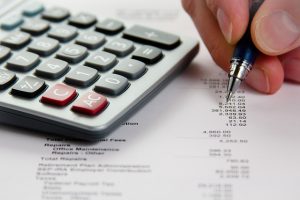 In other episodes, we’ve talked about the importance of planning and budgeting. Forecasting is another powerful resource you can use in your business.
In other episodes, we’ve talked about the importance of planning and budgeting. Forecasting is another powerful resource you can use in your business.
It enables you to see the future of your business. But in order to use forecasting, you need to have a specific workflow in QuickBooks so the data is available.
In this episode of MissionBusinessPodcast.com, Bernard Roesch will discuss the workflow you can use in your business to forecast appropriately.
If you have any questions about this podcast episode, please feel free to contact us.
Podcast: Play in new window | Download
Subscribe: RSS
—
Create Estimates Or Quotes
An estimate is like an invoice, but it’s not booked as revenue.
- When you have an opportunity for new business with an existing or new client, don’t wait to log this in QuickBooks until you invoice the client.
- Instead, create an estimate in QuickBooks that you can provide to the client as an estimate for their project.
- Not only is this more formal for the client, which makes you look more professional, but it also gives you a data point in QuickBooks for this future revenue.
Use Sales Orders
When someone approves the estimate for the project, you can convert the estimate to a sales order. A sales order shows that they approved the estimate, and you’re ready to ship or perform the service.
- While this doesn’t affect your revenue, it does show as an open order in QuickBooks along with a record of when it is due.
- Again, this is an important data point to be available in QuickBooks to be able to forecast what is going to happen in the future with revenue.
Recording Revenue
When you ship the product or actually perform the service, you can invoice the customer using the sales order created above.
- This step actually creates revenue within QuickBooks and is also where most businesses start the process.
- By using the estimate, sales order, and invoicing process above, you have a few important pieces of data that you can use for sales forecasting.
Creating A Forecast
Once you have the data above, you can create a forecast of future revenue.
- The first step is to understand the percentage of estimates that convert to sales orders and the percentage of sales orders that convert to invoices.
- You can get this data by looking at previous jobs or estimate it based on your gut feeling and adjust that estimate over time based on real data.
Within QuickBooks, you can run a report to show you the total estimates and total sales orders for a specific time period, such as the next 90 days. By having this data available and knowing the percentage of estimates that convert to sales orders and sales orders that convert to invoices, you can create reasonably accurate forecasts of future revenue that will occur.
Financial Reporting Workflow
Start by identifying what types of metrics you need and when you need them by.
- The above short-term, mid-term and longer term metrics should help you as a starting point.
- Once you’ve identified what metrics you need, you can work with your bookkeeper to create reports from QuickBooks that are generated when you need them.
- Your bookkeeper will be helpful in configuring these reports within QuickBooks as sometimes you will need something more customized than the default QuickBooks reports.
Set Up Forecasting Today
If you need help setting up this level of planning in your business, contact Bernard today. You can also visit MissionBusinessPodcast.com for more insights that Bernard has been sharing with us in the previous episodes.
Need the best QuickBooks software for your business needs? MISSION Accounting can help.
[Image: https://www.flickr.com/photos/teegardin/5537894072/ ]
Podcast: Play in new window | Download
Subscribe: RSS
